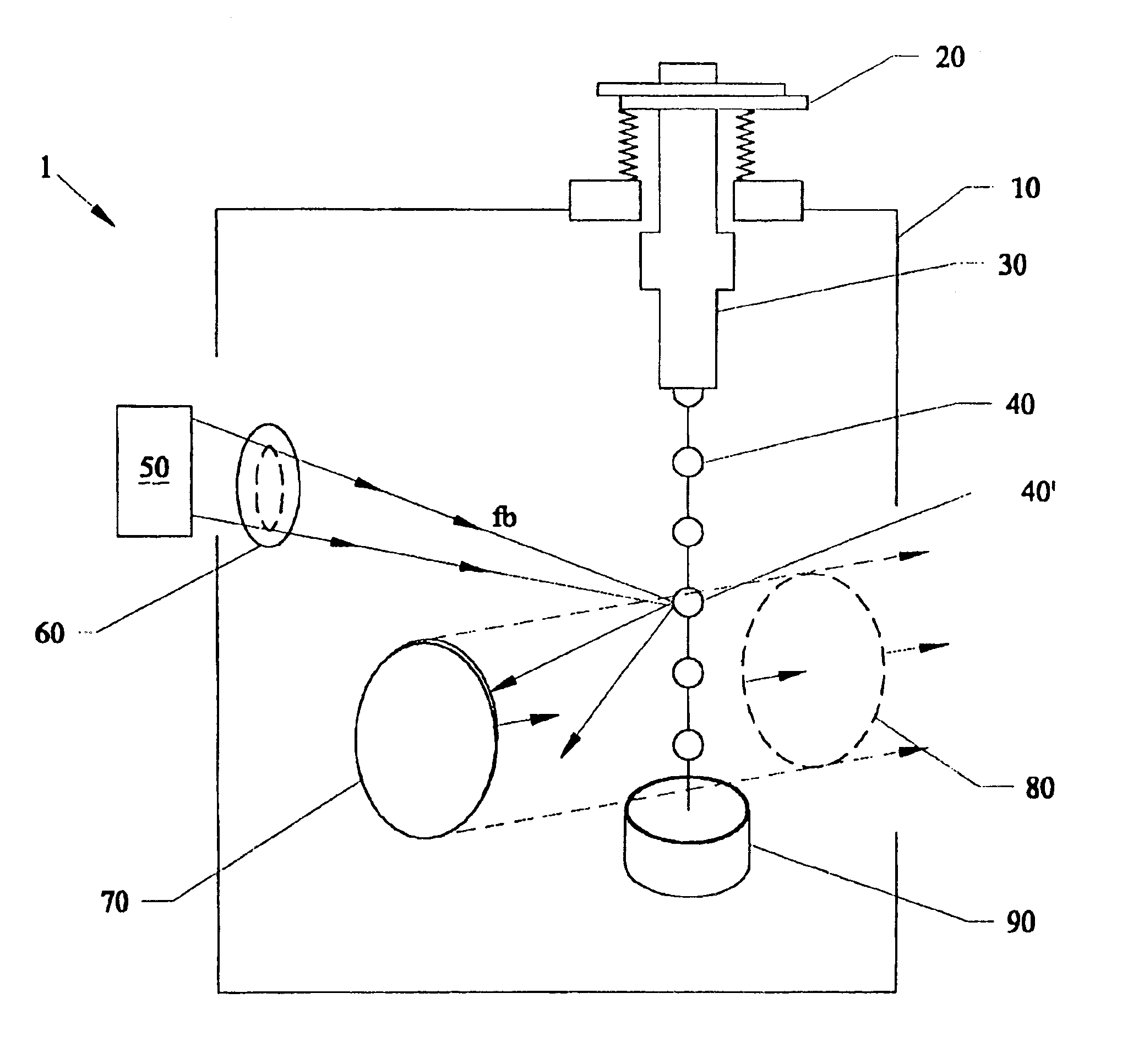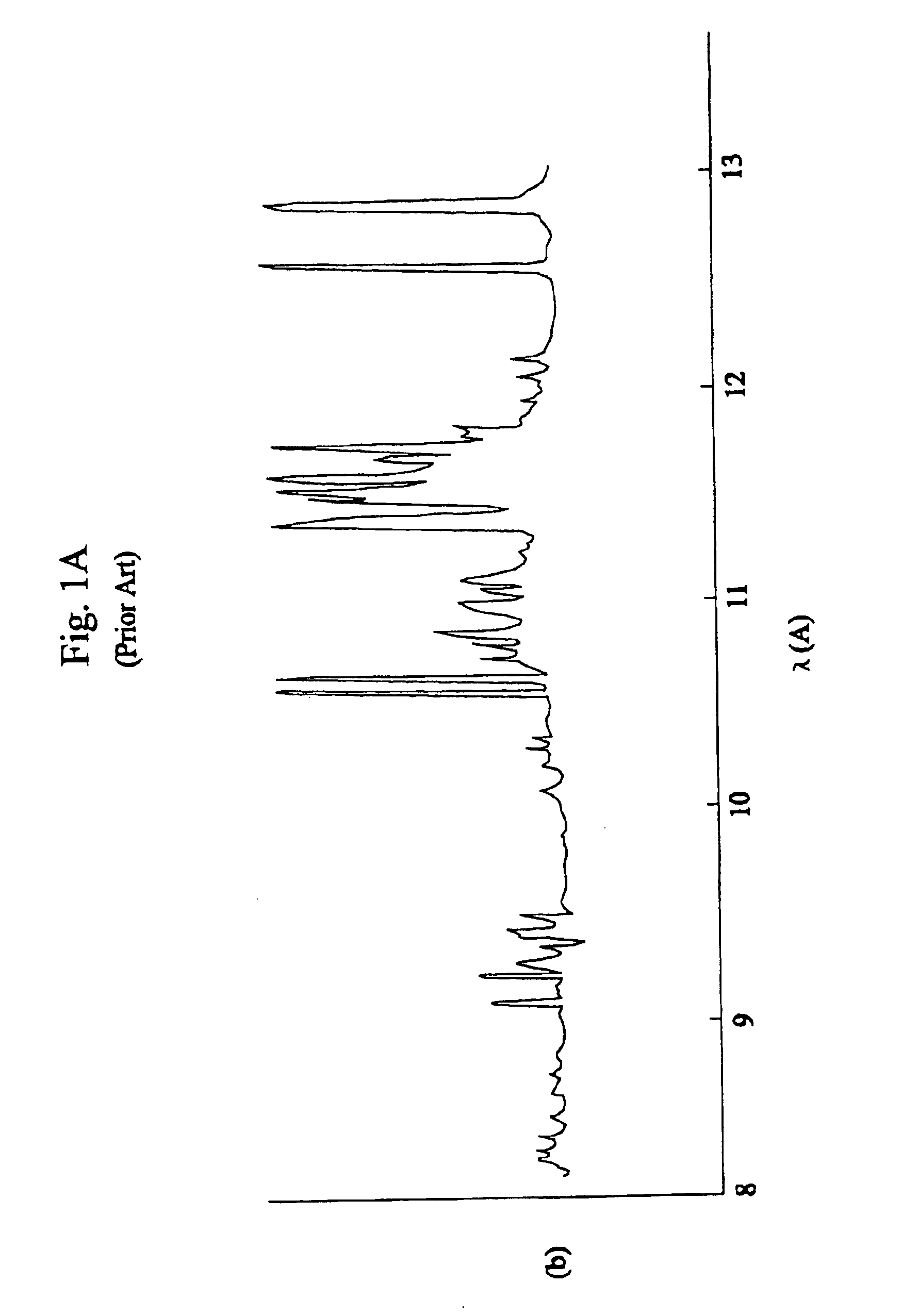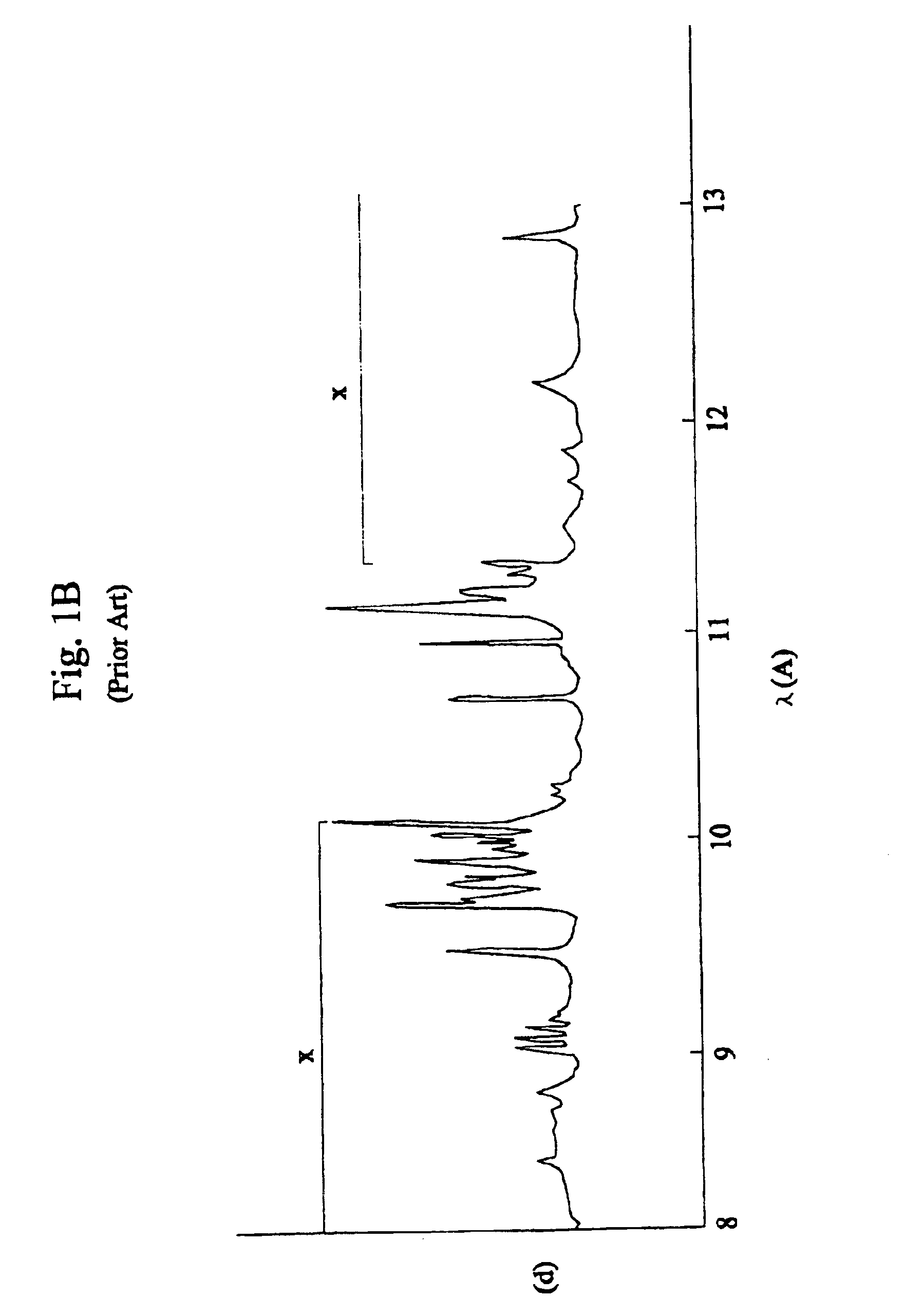EUV, XUV, and X-ray wavelength sources created from laser plasma produced from liquid metal solutions, and nano-size particles in solutions
a technology of laser plasma and liquid metal solution, which is applied in the field of laser point sources, can solve the problems of high cost, inconvenient construction, and inability to meet the requirements of laser plasma facilities, and achieve the effect of being convenient and efficien
- Summary
- Abstract
- Description
- Claims
- Application Information
AI Technical Summary
Benefits of technology
Problems solved by technology
Method used
Image
Examples
first embodiment
FIGS. 1-5b are described in parent application U.S. application Ser. No. 09 / 881,620 filed on Jun. 14, 2001 which is incorporated by reference.
FIG. 2 shows a layout of an embodiment 1 of the invention. Vacuum chamber 10 can be made of aluminum, stainless steel, iron, or even solid-non-metallic material. The vacuum in chamber 10 can be any vacuum below which laser breakdown of the air does not occur (for example, less than approximately 1 Torr). The Precision Adjustment 20 of droplet can be a three axis position controller that can adjust the position of the droplet dispenser to high accuracy (micrometers) in three orthogonal dimensions. The droplet dispenser 30 can be a device similar to that described in U.S. Pat. Nos. 5,459,771 and 5,577,091 both to Richardson et al., and to the same assignee of the subject invention both of which are incorporated by reference, that produces a continuous stream of droplets or single droplet on demand. Laser source 50 can be any pulsed laser whose f...
second embodiment
Metallic solutions of nano particles in various liquids can be used as efficient droplet point sources. Using the same layout as described in the first embodiment in reference to FIGS. 2, 3a and 3b, nano particles in liquids can be used as point sources. The types of nano particles in liquids can generate optical emissions in the X-ray regions, and EUV wavelength regions, and in the XUV wavelength regions.
Various types of nano particles mixed with liquids is listed in Tables 2A and 2B, respectively.
TABLE 2ANano ParticlesAluminum(Al)Bismuth(Bi)Copper(Cu)Zinc(Zn)Tin(Sb)Gold(Au)Silver(Ag)Yttrium(Y)
The nano particles can be made of almost any solid material, and be formed from a variety of techniques, such as but not limited to smoke techniques, explosive wires, chemical reactions, and the like. The nano particles can be configured as small grains of a few 10's of nanometers in dimensions, and can individually range in size from approximately 5 nm(nanometer) to approximately 100 nm.
TABL...
PUM
| Property | Measurement | Unit |
|---|---|---|
| size | aaaaa | aaaaa |
| wavelength | aaaaa | aaaaa |
| wavelength | aaaaa | aaaaa |
Abstract
Description
Claims
Application Information
 Login to View More
Login to View More - R&D
- Intellectual Property
- Life Sciences
- Materials
- Tech Scout
- Unparalleled Data Quality
- Higher Quality Content
- 60% Fewer Hallucinations
Browse by: Latest US Patents, China's latest patents, Technical Efficacy Thesaurus, Application Domain, Technology Topic, Popular Technical Reports.
© 2025 PatSnap. All rights reserved.Legal|Privacy policy|Modern Slavery Act Transparency Statement|Sitemap|About US| Contact US: help@patsnap.com



